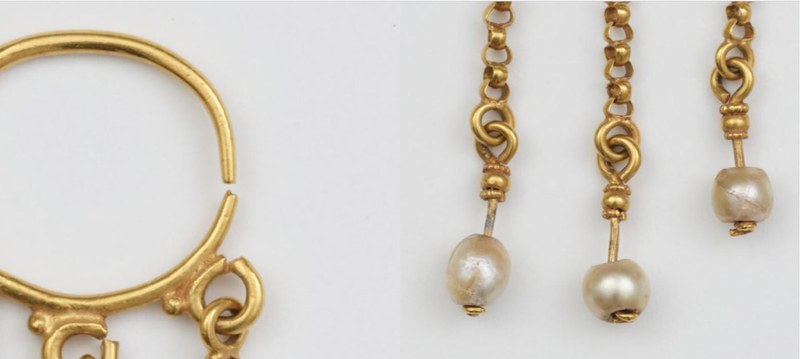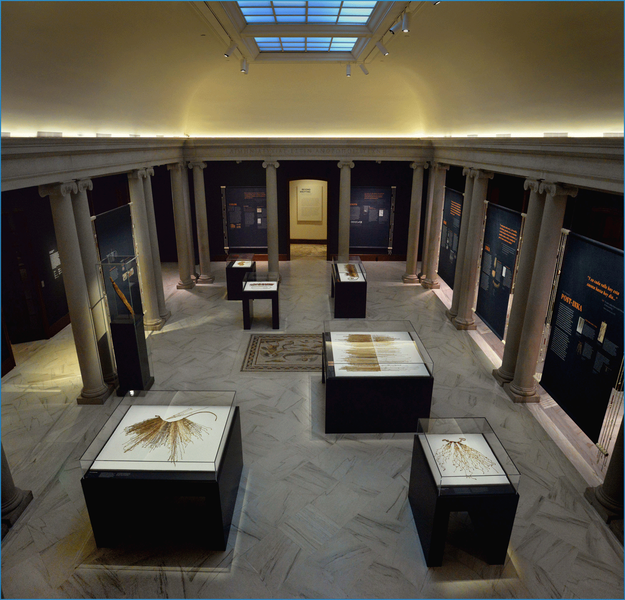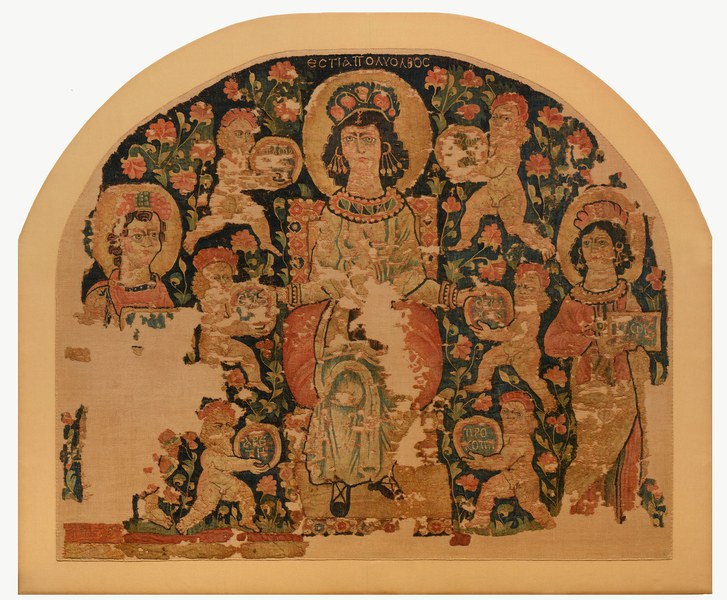
Rich in Blessings: Women, Wealth, and the Late Antique Household
A woman’s wealth in late antiquity was arguably never fully her own, at least not in a manner that we would understand today.
At home and in public, luxury art broadcast late antique elites’ status in a society characterized by deep economic inequalities. Whereas household artifacts like textiles, plate, ivory, and jewelry undeniably served to embellish bodies and interiors, from another perspective such works might be seen as exclusive symbols of individual and family affluence. In their imagery and materials, artworks associated with dress and decor conveyed charged messages about late antique attitudes toward prosperity, ownership, and display, particularly as concerned women’s property and the legacies of intergenerational wealth. Paradoxically, the opulence admired in late antique artworks stood in contrast to the period’s emerging Christian and Jewish ideals urging the renunciation and sharing of riches, rhetoric foundational to how communities understood individuals’ philanthropic obligations to society. Rich in Blessings: Women, Wealth, and the Late Antique Household thus explores the multilayered associations of art, wealth, and inequality in late antiquity, prompting consideration of the enduring meaningfulness of these themes in our own world and in museum collections today.
Selected Objects
Hanging Image Description
A semicircular textile fragment has a central haloed female figure, who sits on a gem-encrusted throne upon a plush pink cushion. A wreath with fruits resembling pomegranates is perched above her dark hair. The figure wears a richly draped but unadorned tunic in pale blue, which is accessorized with extensive jewelry, including pearl earrings, a pearl- and gemstone-studded collar, and pairs of gold bracelets over her pearl-covered cuffs. A dark purple-colored area at the center of her lap is difficult to read due to the deterioration of the fabric. Above her head, woven into the blue background color in white, is an inscription in Greek identifying her as the goddess Hestia. The ground around her, woven in a dark blue, is filled with pink flowers on vine-like green stems.
She is symmetrically flanked by a total of six small nude boys—resembling putti or genii— who seem to walk briskly toward her. The boys are nearly identical to one another, with curly blonde hair and pink floral wreaths crowning their heads. Each holds a disk resembling a round platter or tray in their outstretched hands. Each disk has a Greek inscription that names the gifts from each platter. Hestia, while facing the viewer frontally, reaches both her arms outward and grasps the two middle disks.
Flanking this central depiction two full-length haloed figures, one male and one female, turn toward Hestia. At left, a male figure with short brown hair and an elaborate headdress resembling a wreath with red fruits is only partially preserved. The top of his mantle and tunic are visible, as is his left foot. At right, a female figure stands similarly facing toward the center, though her body’s position is turned more frontally. Her hair style is similar to Hestia’s rich and wavy dark hair, though her pink headdress is different and her jewelry is less lavish, with pendant earrings that feature not four but only two strands or chains. Both these framing figures hold unidentifiable rectangular objects—we may identify them as gray boxes or trays—inscribed with Greek letters.
Belt Image Description
A circular belt made of connected golden circular elements that almost look like coins. Each circle has figures engraved into it, showing different scenes from mythology as well as Christian scenes. At the center, two larger circles are on either side of a golden clasp.
Bracelet Image Description
Two small panthers made of gold form a bracelet. The panthers are joined by a central gold pedestal with a gold setting that looks like a large gem should have been set in it at one point.
Ring Image Description
A gold ring with a circular bezel. Engraved in the bezel in black is a cross at center, and there are figures in gold to the left, right, and above the cross. The figure above the cross has a halo. Below the cross in black is a Greek inscription.
Exhibition Photos
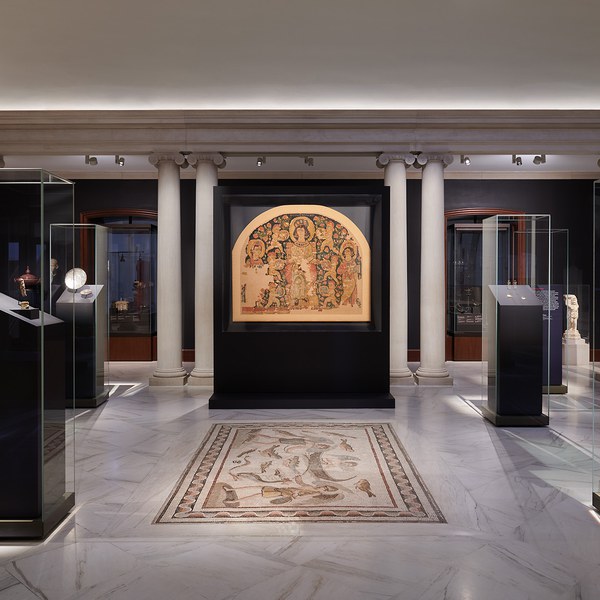
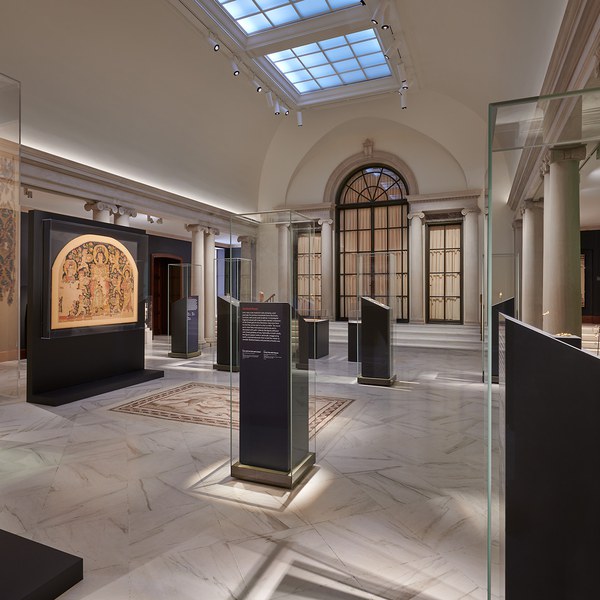
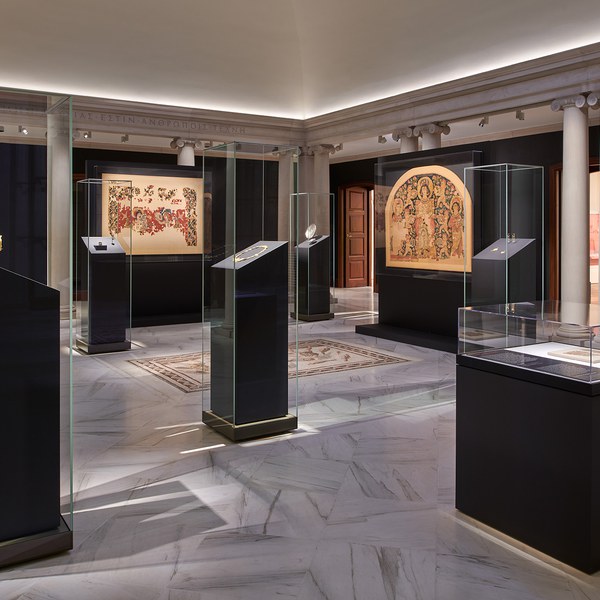
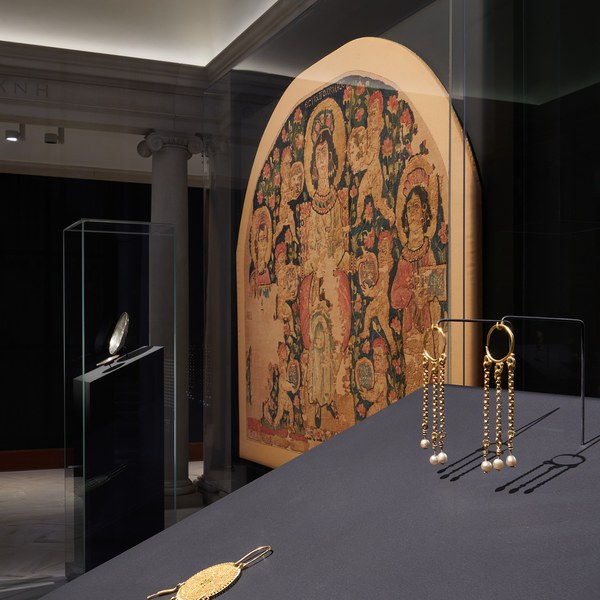
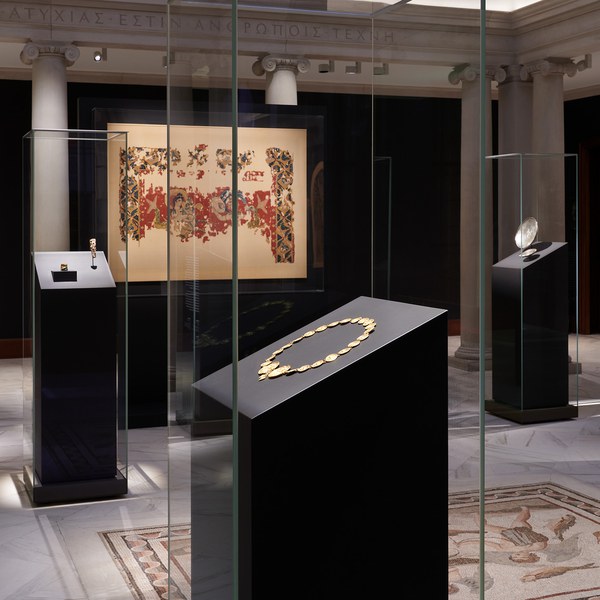
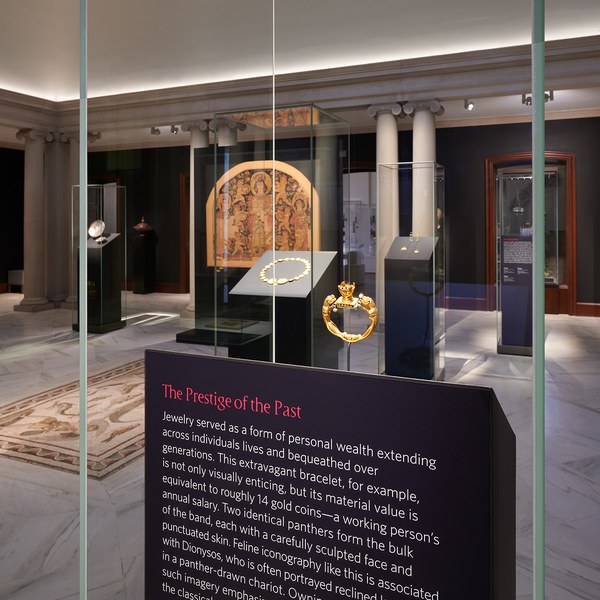
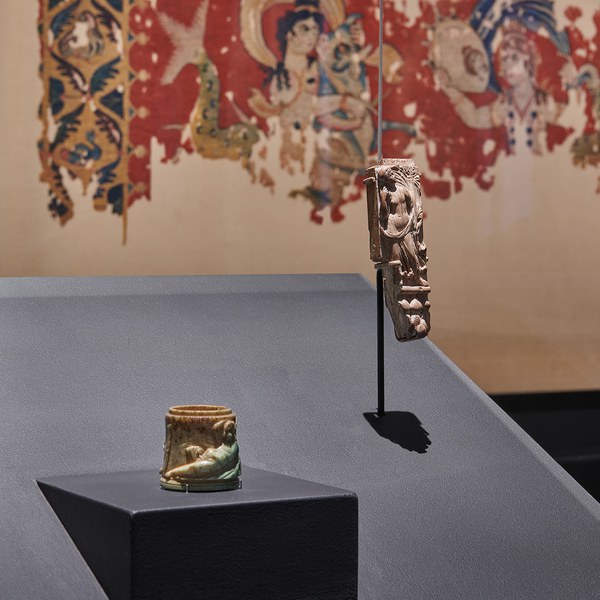
Photography by Anice Hoachlander
Further Reading
- Bruhn, Jutta-Annette. Coins and Costume in Late Antiquity. Washington, DC: Dumbarton Oaks Research Library and Collection, 1993.
- Caner, Daniel. The Rich and the Pure: Philanthropy and the Making of Christian Society in Early Byzantium. Berkeley: University of California Press, 2021.
- Dospěl Williams, Elizabeth. “Worldly Adornments: Women’s Precious Metal Jewelry in the Early Medieval Eastern Mediterranean (500–1100 CE).” Ph.D. dissertation, New York University, 2015.
- Gardner, Gregg E. Wealth, Poverty and Charity in Jewish Antiquity. Berkeley: University of California Press, 2022.
- Jones-Rogers, Stephanie E. They Were Her Property: White Women as Slave Owners in the American South. New Haven: Yale University Press, 2020.
- Kalavrezou, Ioli, ed. Byzantine Women and Their World. Cambridge, MA: Harvard University Art Museums, 2003.
- Maguire, Eunice Dauterman, Henry P. Maguire, and Maggie J. Duncan-Flowers. Art and Holy Powers in the Early Christian House. Urbana: University of Illinois Press, 1989.
- Piketty, Thomas. A Brief History of Equality. Cambridge, MA: Harvard University Press, 2022.
- Walker, Alicia. “Myth and Magic in Byzantine Marriage Jewelry: The Persistence of Pre-Christian Traditions.” In The Material Culture of Sex, Procreation, and Marriage in Premodern Europe, eds. Anne L. McClanan and Karen Rosoff Encarnación, 59–78. New York: Palgrave McMillan, 2002.




